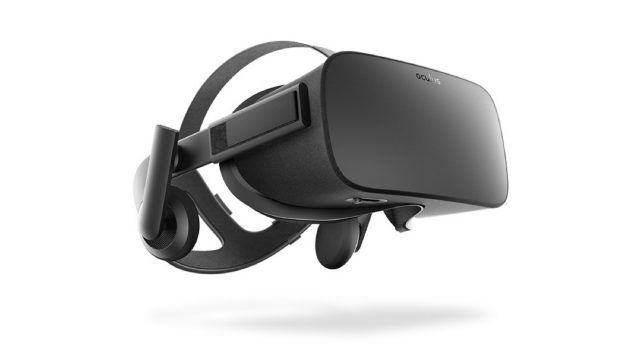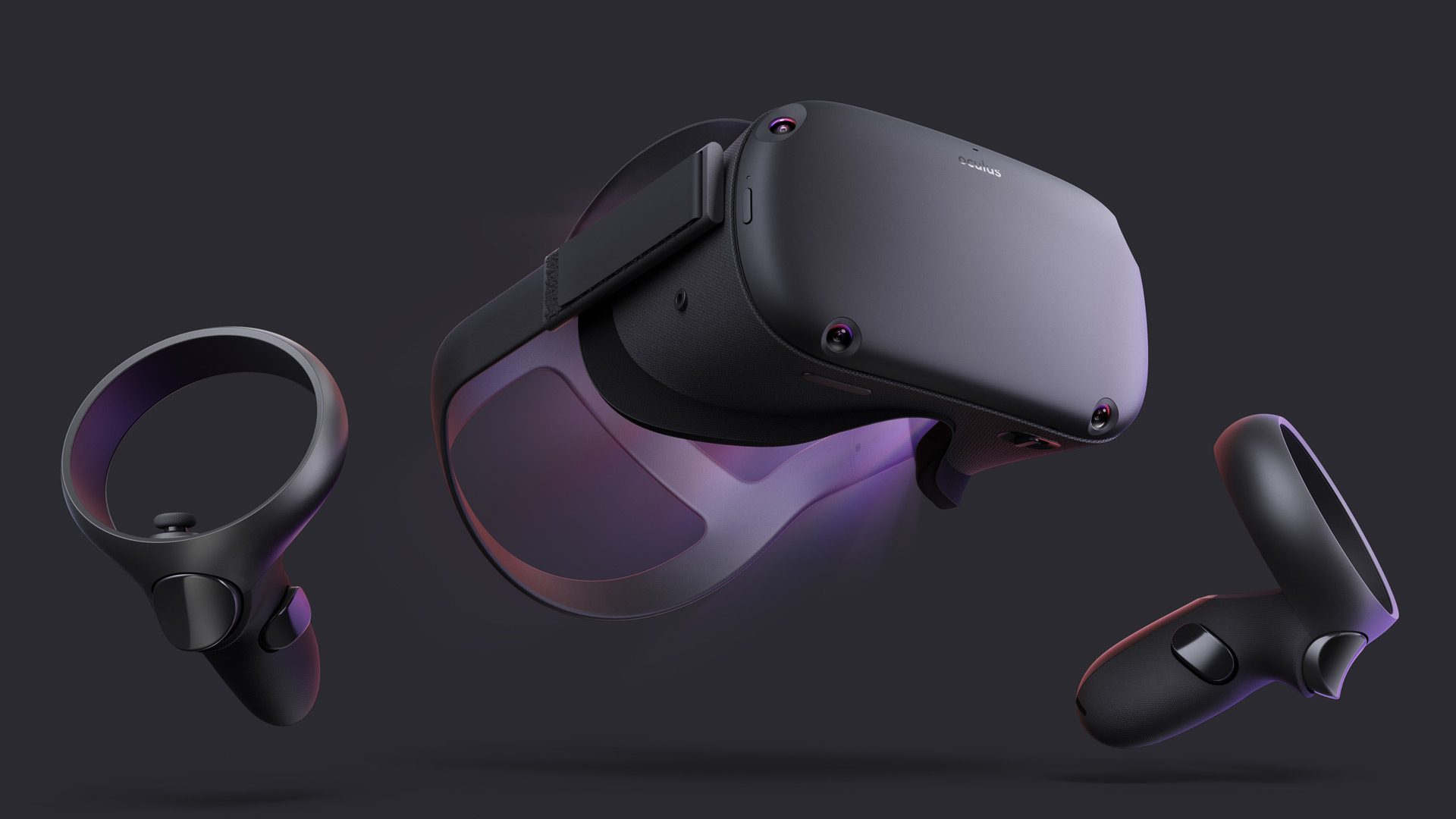According to a report by UploadVR, citing emails sent from Facebook to Oculus developers, the rumored Rift S headsets will be revealed next week at GDC.
Rift S was first brought to light in a TechCrunch report last year about the leadership shakeup at Oculus and purported shifting product plans. The report said that Facebook/Oculus had decided to cancel a larger ‘Rift 2’ overhaul in favor of a more modest product refresh called the ‘Rift S’.
An UploadVR report this evening cites an email sent from Facebook to VR developers which “suggests ‘Rift S’ will be formally revealed at GDC 2019,” the annual Game Developers Conference hosted next week in San Francisco. Oculus is already confirmed as attending the event but hasn’t said anything about the potential of a new headset being revealed. Oculus declined to comment on the UploadVR report.
Origin of the Rift S Rumors
In the TechCrunch report last year, citing “a source familiar with the matter,” it was stated that the Rift S would likely bump the resolution of the headset and move to an inside-out tracking system which would ditch the external sensors—which the headset needs to track its position—in favor of on-board cameras which could do the same job while simplifying setup and usage of the headset. Oculus has already demonstrated its inside-out tracking technology, which it calls ‘Insight’, on its upcoming standalone VR headset, Quest.
Last month, UploadVR uncovered code in the Oculus software referencing the Rift S explicitly. Rumors of the updated headset have further been stoked by spurious availability of stock for original Rift headset in recent weeks, as well as a quiet price drop on the headset from $400 to $350 back in January.
Original Rift Going Strong Despite Age


The Rift is Oculus’ first, and so far only, PC VR headset. It was released back in 2016, and sports a 1,080 × 1,200 resolution and a ~100 degree diagonal field of view. At launch, the headset was priced at $600 and included an Xbox One controller as the primary input device, with content primarily designed for seated gameplay.
It wouldn’t be until the end of 2016 that Oculus would launch the now standard ‘Touch’ motion controllers for $200, which have become the headset’s primary input device (with the Xbox One controller eventually removed entirely from the package) and pivoted the vast majority of content toward standing ‘front-facing’ gameplay with motion input.
While the default setup for the two included sensors offers front-facing gameplay, the system supports standing 360 gameplay with opposing sensors, or full ‘room-scale’ gameplay with an optional third sensor placed in a corner of the playspace. As the sensors need to plug into the host PC, adding a third sensor for a larger playspace can be a pain because it means running a cable across the room. Inside-out tracking— which does away with external sensors in favor of cameras mounted on the headset itself—would make room-scale tracking the default, while simplifying the setup and usage.
Microsoft and its hardware partners were the first to debut consumer PC VR headsets featuring inside-out tracking back at the end of 2017, with many agreeing about the improved ease of use; compared to headsets with external tracking equipment, the Windows VR headsets simply plug into the PC from a single tether and are ready for room-scale tracking out of the box. However, controller tracking is made more difficult with inside-out tracking because players can more easily block the on-headset cameras from seeing the controllers. This can pose challenges for certain games which ask the player to move their hands close to their body (or in some cases behind their back or over their shoulder).
Despite its age and lack of successor three years later, the Rift is among the leading consumer VR headsets overall, and the most popular headset in use on Steam. Oculus has steadily cut prices on the Rift from the initial $800 price point (for the headset and Touch controllers) all the way down to the $350 as of January, 2019. While the Rift’s industrial design has held up well, three years on there are a handful of headsets offering higher resolutions and wider fields of view.
Rift S Expectations
The Rift S isn’t expected to be a sequel to original Rift as much as a refresh. Aside from the inside-out ‘Insight’ tracking, it’s expected that the headset’s resolution will be bumped and that newer optics will be used, possibly the same (or similar) as those used in Oculus Go or Quest, which the company has called their “best ever.”
In the resolution department, it seems likely that the Rift S will wind up with the same display as Quest (1,600 × 1,440), which would be a nice step up, and put the headset on par with the Vive Pro and Samsung Odyssey in terms of resolution. Alternatively, Oculus could try to get ahead of the competition by adopting even high-res displays, like the 2,160 × 2,160 panels seen in the upcoming HP ‘Copper’ headset, though this would mean a move from OLED to LCD; so far Oculus and others have mostly chosen OLED displays for higher-end headsets, though there remain pros and cons to consider with regards to LCD.
What isn’t expected to change (at least not by much) is the headset’s ~100 degree field of view. While Oculus itself has shown off the ‘Half Dome’ prototype headset with a 140 degree field of view, expanding the field of view would require more significant changes to the headset’s optics and displays, likely being out of scope for a ‘Rift S’ refresh. Pimax is already offering an ultra-wide FOV VR headset, but other consumer headsets remain largely in the ~100 FOV class. No improvement in field of view could leave many early adopters wanting, as resolution and FOV are among the most vocally requested improvements.
Eye-tracking is another feature which is up in the air for Rift S. On one hand, eye-tracking is a game-changing technology that’s expected to play a big role in the future of VR—and having eye-tracking in a real product could provide Oculus with real-world data to further hone the tech—but on the other hand the company might withhold eye-tracking until it can provide a complete package with varifocal displays, as seen in Half Dome.
And then there’s wireless, another oft-requested feature but one which has yet to permeate the VR landscape of high-end tethered headsets. While there are at least two wireless add-on accessories currently on the market (from TPCAST and HTC), they are fairly expensive and add significant bulk and additional setup complexity. Especially considering that the Rift S is likely to increase resolution (which raises the bandwidth requirements for a wireless solution), and seems aimed at reducing setup complexity with inside-out tracking, wireless seems unlikely for a refresh.
– – — – –
GDC 2019 is being held next week from March 18th to 22nd in San Francisco, CA. Road to VR will be on the ground to bring you the most important news from the event. Stay tuned.
Update (March 16th, 2019 – 11:22AM PT): Added an additional paragraph discussing the potential for wireless in the ‘Rift S Expectations’ section, and added Oculus’ response to the report (‘no comment’).

